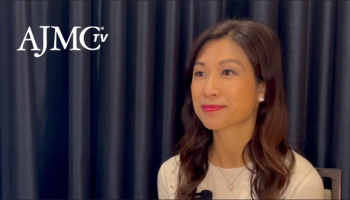
Dr Adrian F. Hernandez on the Future of Real-World Evidence
Adrian F. Hernandez, MD, MHS, vice dean, clinical research, Duke University School of Medicine discusses how technology can be used to improve the way we gather and use real-world evidence, the promise that real-world evidence holds, and how he thinks real-world evidence will be used in the coming years.
This page contains sponsored advertising
Adrian F. Hernandez, MD, MHS, vice dean, clinical research, Duke University School of Medicine discusses how technology can be used to improve the way we gather and use real-world evidence, the promise that real-world evidence holds, and how he thinks real-world evidence will be used in the coming years.
Transcript
How can technology be used to improve the way we gather and use real-world evidence?
There’s a lot of technology around us every day, from our phones to our watches, to get our information that we can leverage that’s outside of a health system. So, if you think about that, we’re trying to get to a fuller picture of what’s happening to a person, to a group of people, regarding their journey in health, and so technology is a great enabler for that and something we can take advantage of for real-world evidence.
What promise does the use of real-world evidence hold? How can and should it be used to improve care?
Everyday people want to understand, “what do they need today?” Clinicians try to understand what should they actually offer to a patient. People try and understand what health decisions they should make in a better way among the many choices that they have. So, if you think about real-world evidence, that’s actually incorporating both of those concepts in terms of what a clinician can offer a patient, what a patient decides in terms of the alternatives that they have, and then actually hopefully learning from that experience, so that others down the road can make better decisions.
As technology continues to evolve, what is your projection for how it will be used 5 years from now to improve the use of real-world evidence in a way that it currently isn’t being used?
In some ways the question is not just 5 years, but what will happen a year from now, or 3 years from now. Certainly, with the advances in terms of having greater access to data, the ease of computational methods, and the better way to incorporate various data silos that hadn’t been done before, the technologies can really transform what can be used in 3 or 5 years. Seeing how the ecosystem changes from individuals having greater access to information that might have empowered them for better decisions to clinicians or systems empowered to make better decisions for access to data to also regulators and payers, for instance, actually using real-world data to drive their decisions, and technology is going to be the great enabler for all of that.
Newsletter
Stay ahead of policy, cost, and value—subscribe to AJMC for expert insights at the intersection of clinical care and health economics.
















































